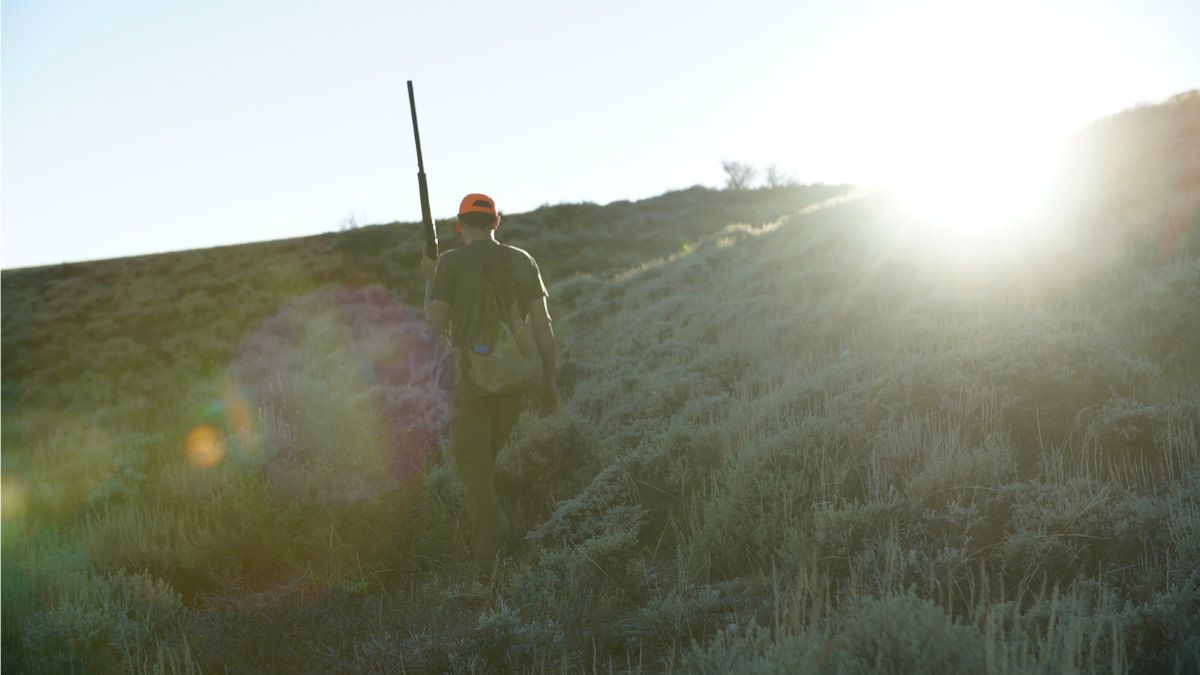
You may never swing a shotgun after a sage grouse, the largest North American grouse, but you still have skin in the game in the fight for their future.
That is because sage grouse represent something much larger than the upland birds themselves: the public lands and sagebrush steppe habitat critical to Western hunting and wildlife.
I first saw sage grouse when I was about 13, sitting in a ground blind waiting for pronghorn to step into bow range in Idaho’s Lemhi Valley. Every sundown, scores of these huge birds would lift off and skim the tops of the sage to their roosting areas, their wingtips nearly brushing my hat. I’ve been a big fan ever since.
The future of these birds—and the West they represent—is being decided right now. The fight is hot and the stakes are high. Here are some critical points to keep in mind as the sky fills with rhetorical flak.
- Sage grouse are hurting, but we still have time. They have been reduced by about 90 percent across their range. That said, there are still hundreds of thousands of sage grouse left so we are not in the dire straits as, say, California condors.
- Most population loss is due to habitat loss. Sage grouse are specialists that depend on large expanses of sagebrush for cover, food and moisture. It’s hard to fathom since sagebrush ecosystem covers some 170 million acres, but all sorts of human activities have degraded sage grouse habitat. Particularly oil and gas development, roads, fences, changes in fire patterns, weeds like cheatgrass and even diseases like West Nile virus. Regulated hunting is not a threat, but even so, most sage grouse states have adopted very conservative hunting regulations on the species.
- What’s good for the bird is good for the herd. Healthy sagebrush steppe is excellent habitat for a broad assortment of wildlife, “freezer species” and others. Pronghorn, pygmy cottontail, mule deer and elk are some familiar creatures that depend on this ecosystem too.
- Folks across the political spectrum have worked hard to develop conservation plans to keep sage grouse off the endangered species list and in hunters’ game bags. In 2015, state wildlife agencies, hunters, conservationists, oil and gas industry representatives and livestock interests developed conservation plans and funding packages that attempted to balance competing interests who have a stake in the sagebrush steppe ecosystem. This was a herculean task, involving 11 states from Washington to Nevada, Montana to California.
- Sage grouse, meet “Energy Dominance.” Under the Trump Administration’s “Energy Dominance” doctrine, America’s goal is not only to compete in global energy markets, but to dominate them—even overwhelming OPEC countries like Saudi Arabia. To turn America’s oil spigot full blast, the Trump Administration has pushed back habitat protections that may restrict energy development, re-writing the 2015 sage grouse plans. Remember, long before the Energy Dominance doctrine, oil and gas exploration boomed across the West, turning many formerly game-rich habitats in industrial zones.
One word commonly bandied about is “balance.” From the bird’s (and bird hunters’) perspective, this balance has been tipped well off-center for decades now. The question is, is America big enough and visionary enough to make sure sage grouse—and all the species within the sagebrush steppe ecosystem—have a place in our future?
Artemis is the name of the Greek goddess of the hunt. Artemisia is also the Linnaean genus of sagebrush. In a vast swath of the West, the future of sage and the future of the hunt are twisted together like strands of a rope. Everyone burns oil, but sage grouse have very few political advocates. Hunters would be wise to be among them.






